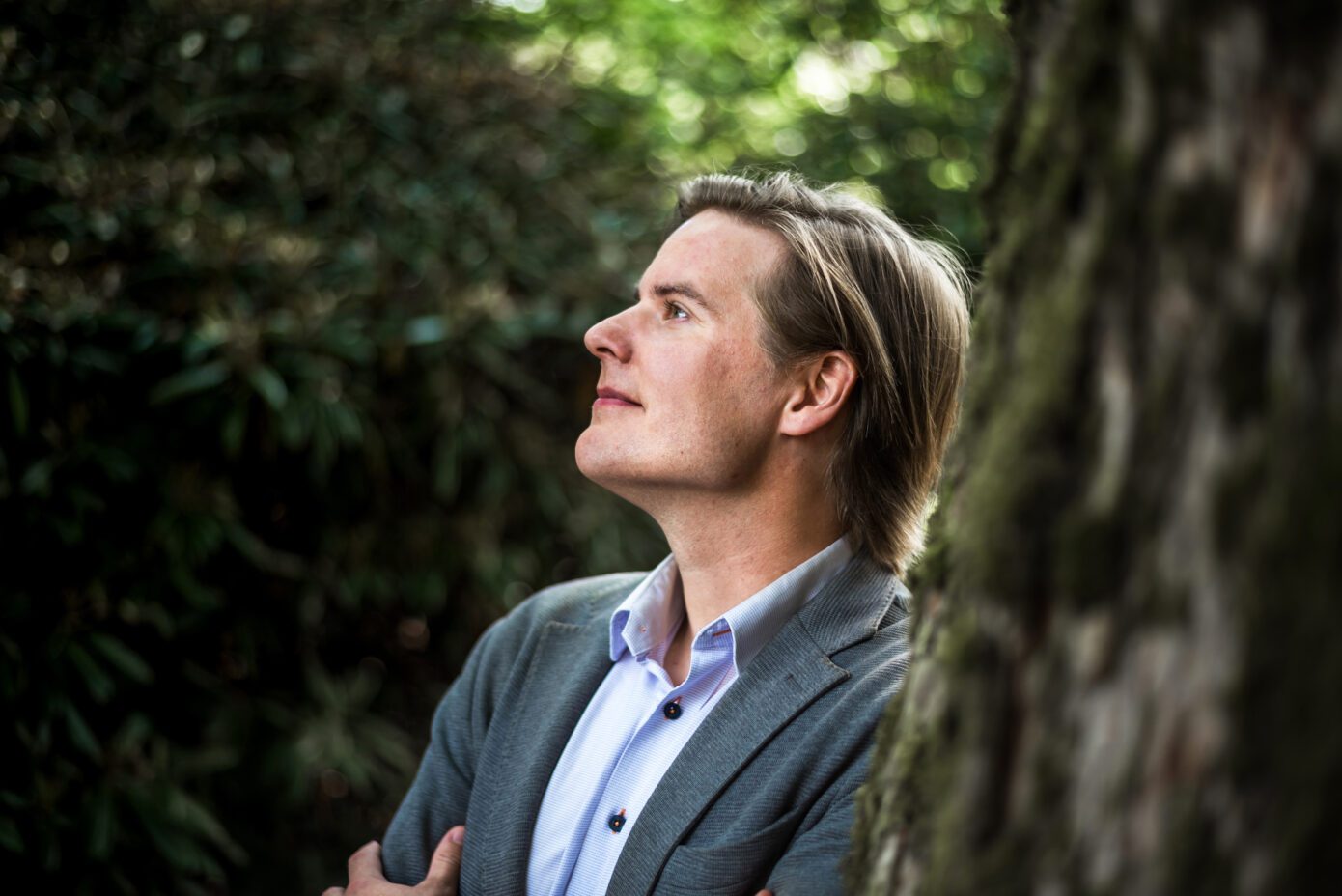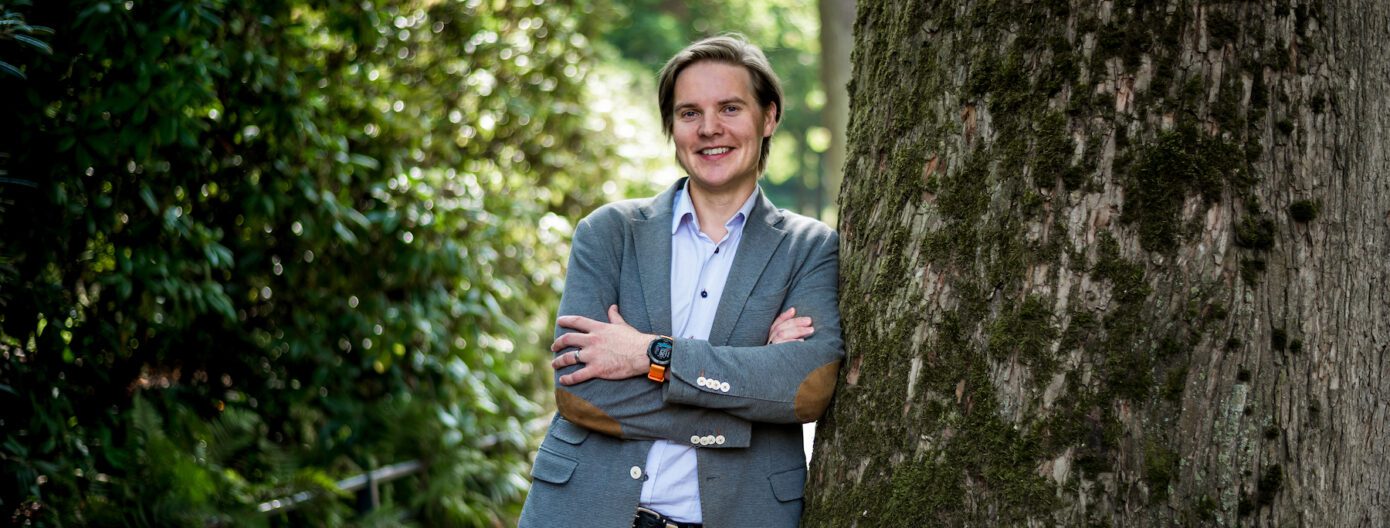In his work, Niko Soininen, Professor of Environmental Law at the University of Eastern Finland, considers how law and legislation affect the promotion of the sustainability transformation. On the Board of the Nessling Foundation, he wants to act as a practical facilitator for the sustainability transformation. To put it bluntly, natural scientists have already stated what the problem is, and it is now time for other fields to put the knowledge into practice, he says.
The Nessling Foundation has defined that all of the work and research it supports must focus on the promotion of the sustainability transformation. The sustainability transformation means that all functions of society must quickly adapt to support human life within the limits of one planet. In many cases, this means a fundamental change in the way of doing things.
Niko Soininen, you examine the role of law and legislation in the sustainability transformation. Is legislation a good tool to promote the sustainability transformation?
Legislation is a key tool to put new policies into practice and to oblige people to act in a certain way. It can bring about rapid changes if only there is the political will to change the legislation.
However, it is often forgotten that the legislative system is not only a means of control but also an institution. It has been shaped over the course of hundreds or thousands of years. Currently, power is divided between the legislator, the court and the authorities, and the law strongly protects private property and competitive markets. Basic institutional solutions like this may very well slow down the sustainability transformation, but not much can be done about them, at least in the short term, because they are built into the constitutional core of societies.
It is also interesting to find out how EU legislation and our national legislation can be reconciled. In the EU, for example, the current goal is to protect 30 per cent of all land and sea areas. In Finland and other EU countries, property rights to land and natural resources create restrictions on the realisation of this goal, for instance. In other words, existing legislation can have a negative or positive effect on how ambitious and progressive a conservation policy can be in terms of sustainability.
You have studied the coexistence of migrating fish and dams that block their routes. The topic typically strikes a nerve. How can strongly differing views be reconciled?
There are many ways to do this. For example, my colleagues have made considerable efforts in several cases to ensure that all viewpoints are heard before decisions are made. In practice, authorities, hydropower plant owners, local land and water body owners and representatives of environmental organisations are seated at the same table. The goal is then to find a solution that satisfies all parties.
Decisions should always be based on researched information and up-to-date reports.
My role is to provide background information for these discussions to support decision-making and processes. On the legal side, it is of primary importance to recognise, for example, the differences between different dams. There are huge power plants with a lot of wealth tied up that are important for our entire electrical system. Such projects typically also involve binding legal obligations to maintain water levels, protect shores from flooding, and so on. In these large social projects, it must be recognised that it is not possible to make fundamental changes in the short term. Minor changes to fishways or discharge can be made, but the big picture stays the same.
On the other hand, we have a lot of small hydropower plants, for which it is possible to reach solutions that benefit everyone through negotiations and compensation from the public authorities or nature organisations, including, even, the demolition of dams. However, the demolition of the dams also largely depends on the legal situation, such as whether the permit for the dam includes fishway obligations or not. The obligation to build a functioning fishway is, in many cases, a strong incentive for getting the owners of the power plant to the negotiating table to consider restoring the rivers.
What is the role of science and researched information in implementing environmental legislations, such as environmental permits?
Decisions should always be based on researched information and up-to-date reports. However, this knowledge often contains uncertainties. In the case of new factory projects, it is essential to know, for example, how well the fish population in a certain place can withstand human pressure or how much harmful substances can enter the waterways without the load becoming too large.
Exact information is not always available on factors such as how much nutrients can be released into a water body before the fish population suffers. In such cases, the decision-maker has to make a decision based on the existing information and to the best of their judgement. A good example of this is the Finnpulp factory project in Kuopio. In the end, it did not receive an environmental permit because the environmental impact assessments ultimately failed to exclude with certainty that the factory would not cause significant harm to the environment. Therefore, the decision-maker considered the risk of the factory to be too great based on legally supported reasons.

How do you see the role of the Nessling Foundation in the field of environmental actors?
The foundation has a great reputation among scientists and society. People want to apply for funding from the foundation. In my opinion, the Nessling Foundation is one of the key actors in the practical facilitation of the sustainability transformation. The idea that the foundation specifically focuses on supporting young researchers is really valuable. It is important to retain the best talents in the field of environmental research.
What do you want to focus on in your work on the Board of the Nessling Foundation?
I believe that my task on the Board is to emphasise the role of social sciences. Environmental research has long been driven by the natural sciences, naturally, because first we had to increase our understanding of what is happening in water bodies, forests or the climate before we could think about what should be done about it. Natural sciences continue to play a significant role in increasing our knowledge about the environment, but it should be supported by social environmental research on a larger scale than before: economic, legal and political research is needed so that we can adopt the ecological boundaries outlined by natural scientists as part of the coordination and operation of our society.
Get to know the other board members
Niina Bergring
Simo Honkanen
Timo Kairesalo
Johanna Kentala-Lehtonen
Tellervo Kylä-Harakka-Ruonala
Pertti Lassila
Jari Niemelä
Niko Soininen
Ilari E. Sääksjärvi
Tuula Varis


